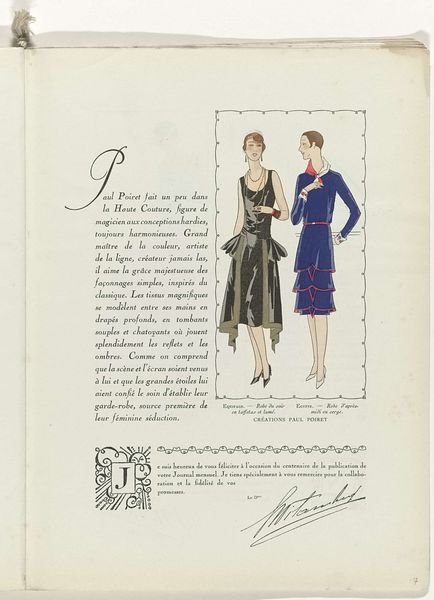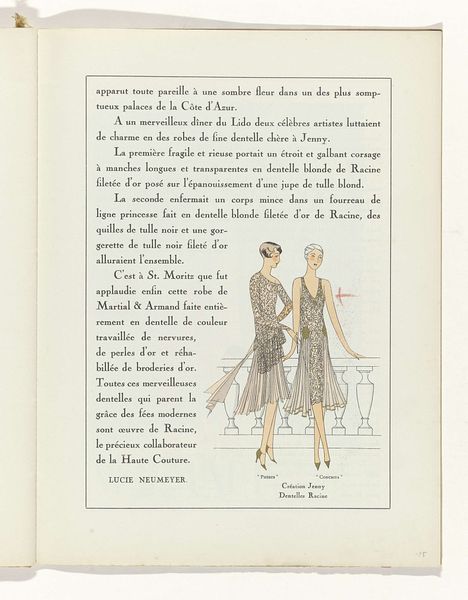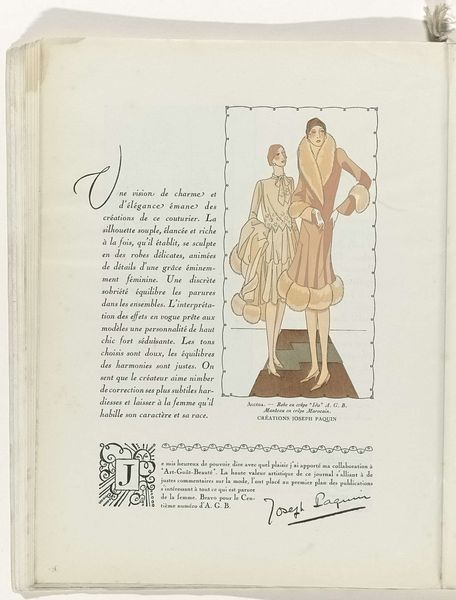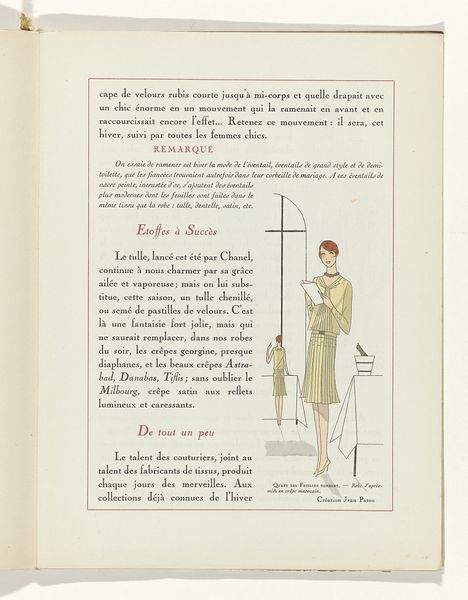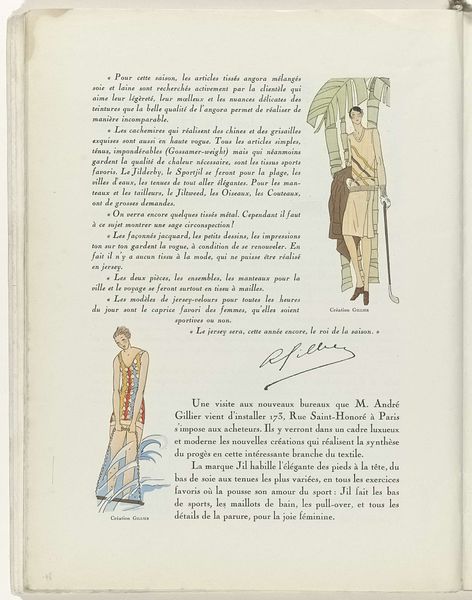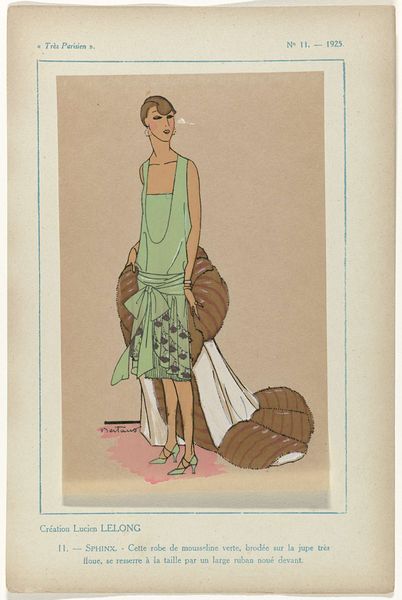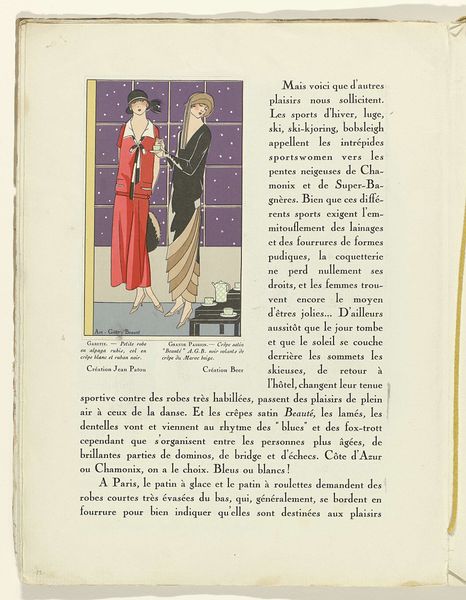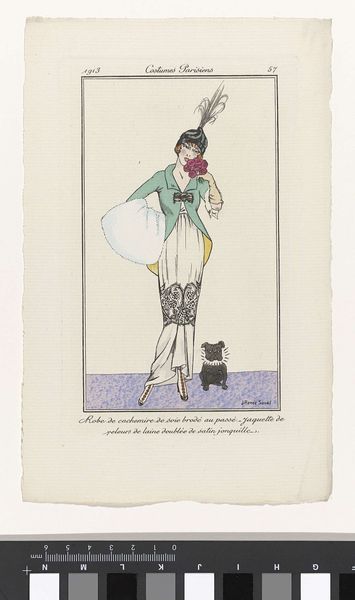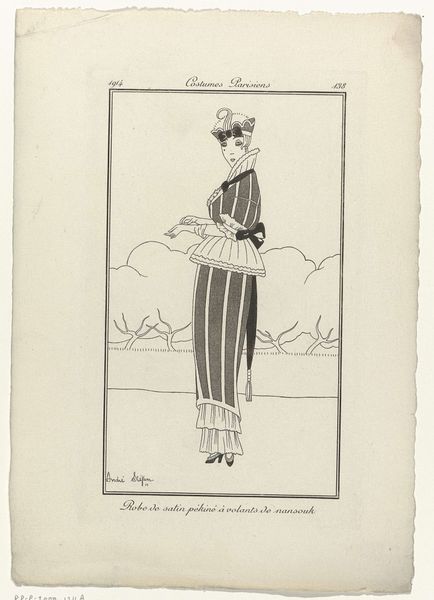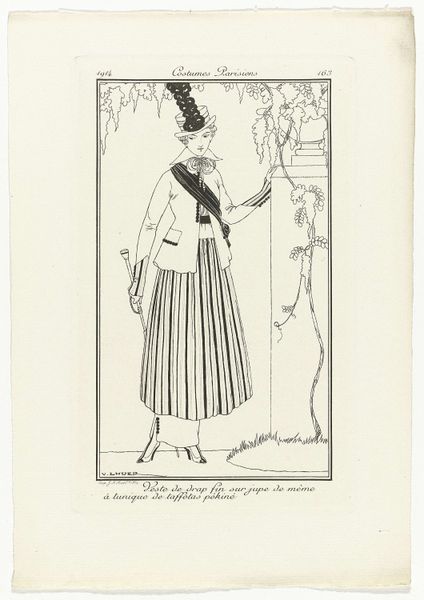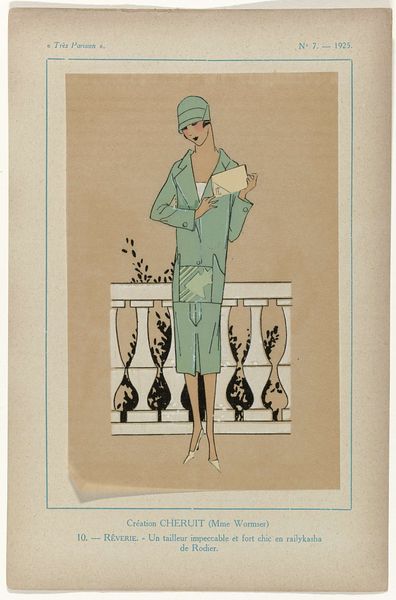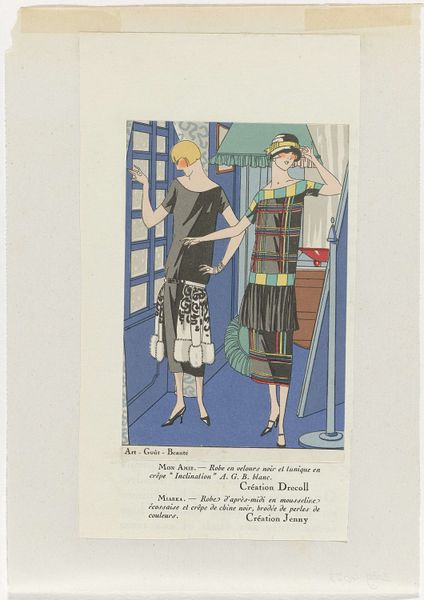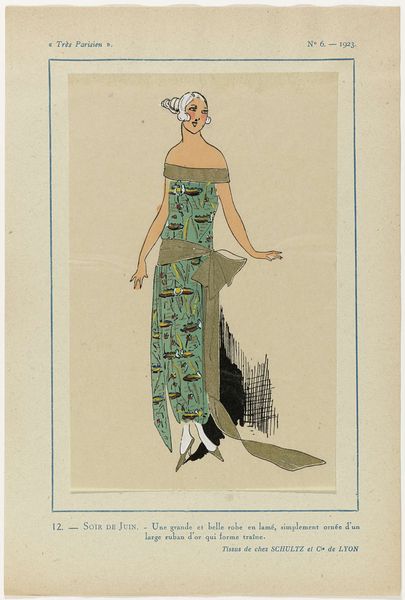
Art - Goût - Beauté, Feuillets de l' élégance féminine, Noël 1928, No. 100, 9e Année, p. 35 1928
0:00
0:00
watercolor
#
portrait
#
art-deco
#
figuration
#
watercolor
#
watercolour illustration
#
dress
#
watercolor
Dimensions: height 315 mm, width 240 mm
Copyright: Rijks Museum: Open Domain
Editor: Here we have an illustration, “Art - Goût - Beauté” from 1928, showcasing "Feuillets de l'élégance féminine." It looks like a watercolor fashion plate of the Art Deco era. The woman has a distant look and stands by a window with great dignity, though her dress appears too large on her body. What can you tell me about this piece? Curator: This illustration evokes powerful visual memory precisely because it freezes an instant. Look at how the dress drapes; it has this clinging quality that contrasts against the woman's stoic stance. It captures the early modern era's shift in the symbolic presentation of women, hinting at a world in flux after the First World War. This period experimented with a certain androgyny, do you see it here, in her bobbed hair and rather severe look? Editor: I see what you mean. Her gaze has such an internal quality! The shapes on the window, combined with her cylindrical dress give a vertical effect which perhaps adds to that stoicism. Is that reading too much into it? Curator: Not at all. The window motif itself signifies not just light, but also the artist’s lens through which we, the viewers, observe the subject. In the same vein, she could be interpreted as not looking towards the exterior or beyond her material possessions; that blank gaze reinforces how fashion was consumed and, in effect, controlled the narratives of femininity during the era. What remains consistent are recurring aspirations: the desire for both modernity and classical composure. Editor: That’s fascinating. So, the image functions on multiple levels: advertising, societal reflection, and the immortalizing of fleeting trends? Curator: Precisely. Each element is a thread connecting the artwork to our collective understanding of beauty, aspiration, and the ever-evolving feminine ideal. These visual relics become keys unlocking the psychology of the period.
Comments
No comments
Be the first to comment and join the conversation on the ultimate creative platform.
